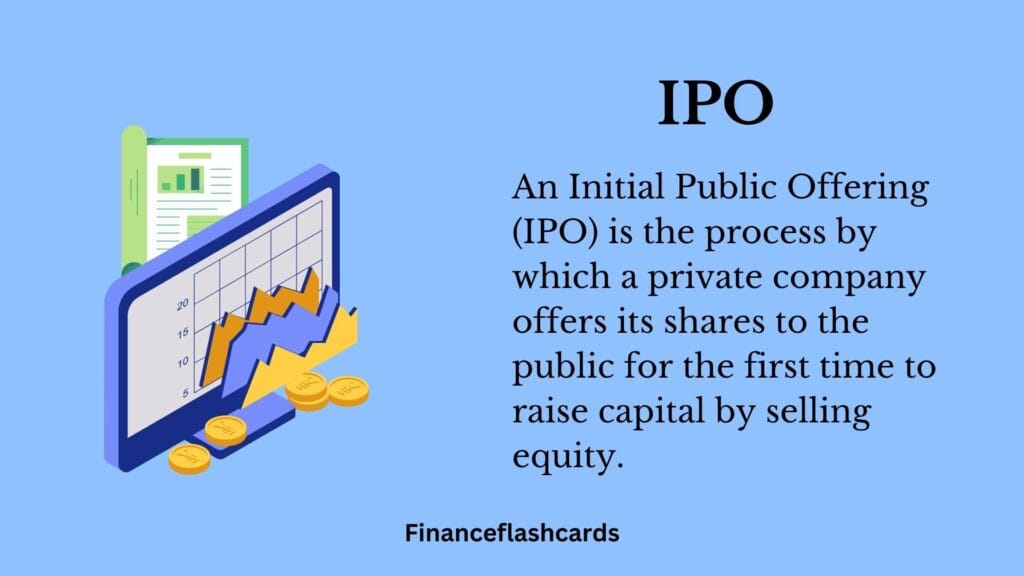An Initial Public Offering (IPO) is the process by which a private company offers its shares to the public for the first time to raise capital by selling equity.
Table of Contents
What is an IPO?
An IPO begins with a company getting its finances in order, hiring experts to guide the process( underwriters), and creating a detailed document about its business and plans (called a prospectus).
After getting approval from regulatory bodies (SEC or SEBI), the company promotes its offering to investors, sets a price for the shares, and lists them on a stock exchange. Once public, the company must regularly share updates about its performance and activities.

How an Initial Public Offering (IPO) Works
Here is a step-by-step process of how a company goes public.
- Early Funding: Startups begin by raising money from angel investors and venture capitalists (VCs), who take ownership in exchange for funding.
- Growth and Decision to Go Public: As the company grows, it may raise additional private funding before deciding to go public to access larger capital and provide liquidity to early investors.
- Preparation: The company hires investment banks (underwriters) and advisors to guide the process, prepare financial records, and draft a prospectus detailing its business, finances, and risks.
- Approval and Marketing: After regulatory approval, the company promotes the IPO to potential investors through a “roadshow” to build interest and determine demand.
- Pricing and Listing: The IPO price is set, shares are allocated to investors, and the company’s stock begins trading on a public exchange.
- Post-IPO: The company adheres to public reporting requirements, while VCs and early investors may sell shares after a lock-up period.
The primary objective of an IPO is to raise capital for a business. It can also come with other advantages as well as disadvantages.
Advantages
An IPO allows a company to raise significant capital for expansion, debt reduction, or strategic projects. It enhances the company’s visibility, credibility, and brand value, making it more attractive to customers and partners.
Publicly traded shares also provide liquidity for early investors and employees, and can be used as currency for acquisitions or employee incentives.
Disadvantages
Going public is costly and time-consuming, involving hefty regulatory requirements and ongoing compliance expenses. It exposes the company to market volatility and pressure to meet short-term expectations, which can shift focus away from long-term goals.
Additionally, founders may lose some control over decision-making due to shareholder influence.

Direct Listing
Direct Listing allows a company to go public by listing its existing shares directly on a stock exchange without issuing new shares or raising additional capital. Unlike an IPO, it does not involve underwriters or a formal share pricing process.
Instead, the stock price is determined by market demand once trading begins. Direct listings are less costly and more transparent, making them ideal for companies that don’t need immediate capital but want to provide liquidity to existing shareholders.
Notable examples include Spotify.
Can Anybody Invest in an IPO?
A new IPO is frequently in high demand, with less supply available. As a result, there is no guarantee that all potential investors in an IPO will be able to purchase shares.
Those interested in participating in an IPO may be able to do so through their brokerage firm, though access to an IPO may occasionally be restricted to a firm’s larger clients. Another option is to invest in a mutual fund or other investment vehicle that focuses on initial public offerings.
How Is An IPO Priced?
The underwriters conduct a “roadshow” to measure interest from institutional investors, which helps to determine the final price. The goal is to raise enough capital while keeping the stock attractive to investors. The price is usually set just before the IPO, based on feedback and market trends.

